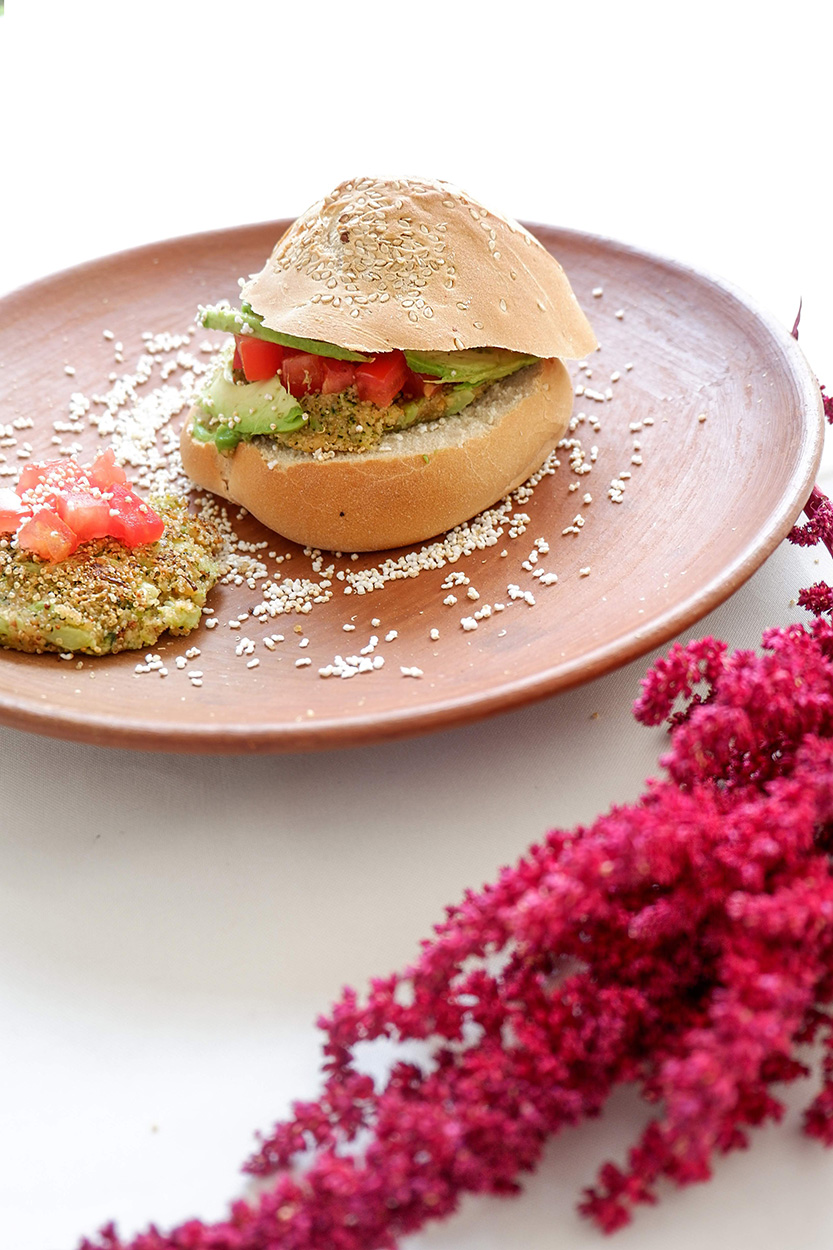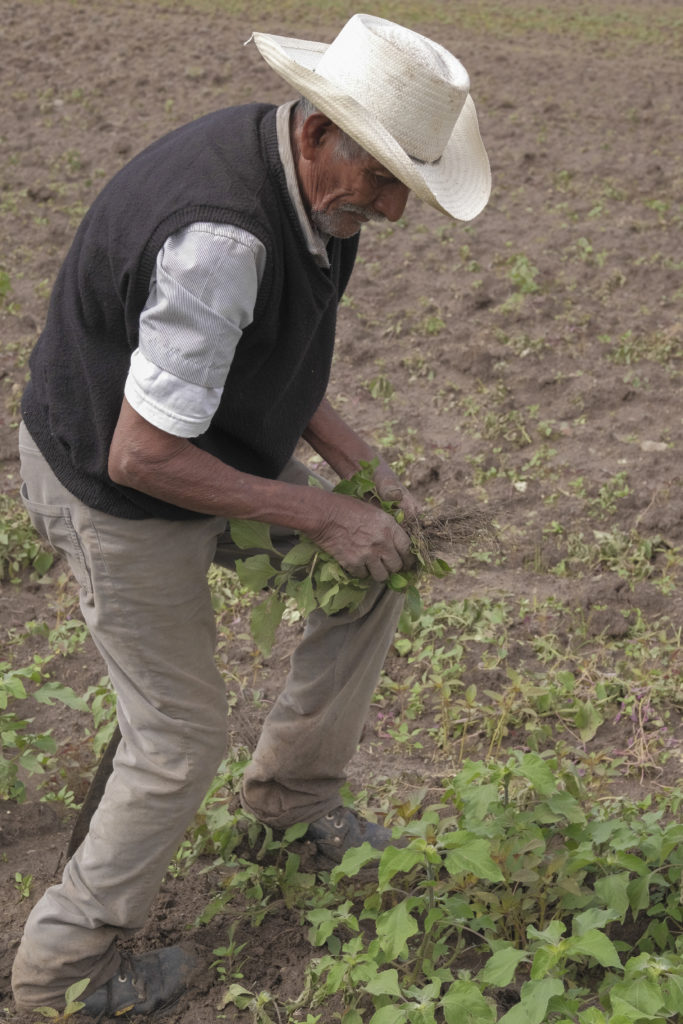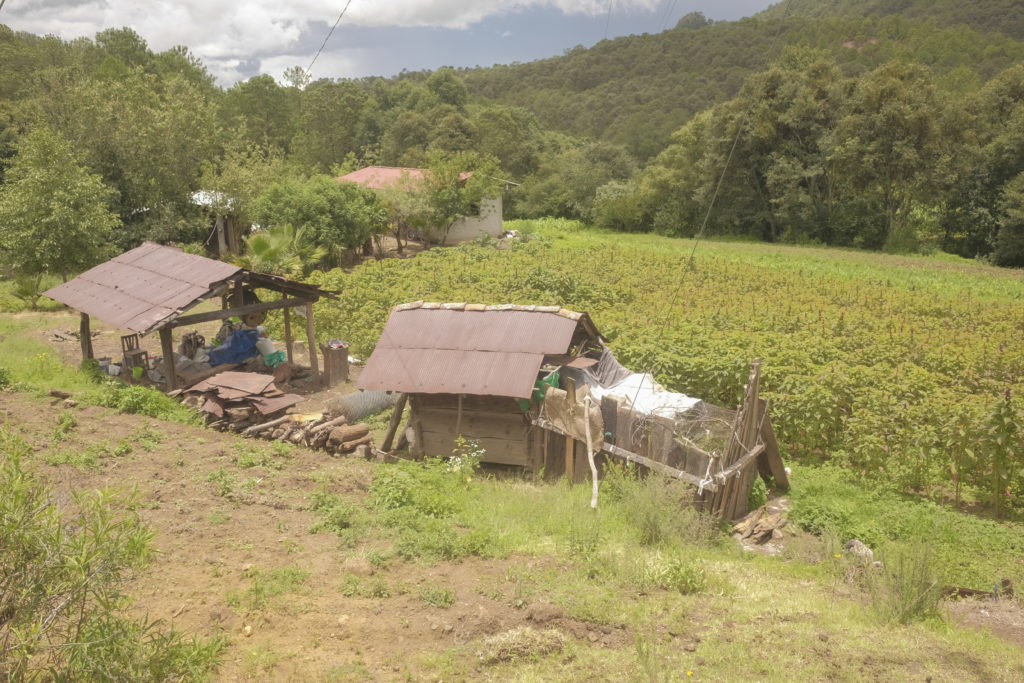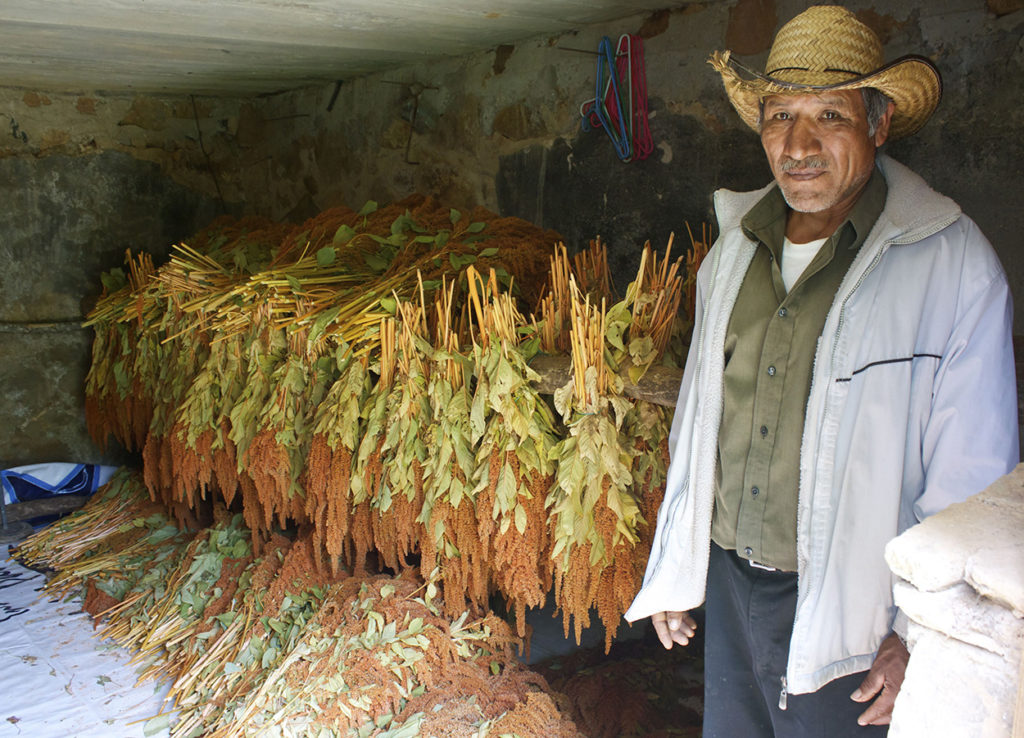The Harvest
Amaranth is planted in June and harvested in November. You can practically take advantage of all of the plant and its use is diverse, both the seeds and the leaves as well as the popped cereal and the flour.
In the Red Amaranto Mixteca, those involved share their experiences and the machinery. Doña Carmen said that now they have a popper with which they can transform the seed and thus use it as a cereal in desserts, salads, sauces, breads, broths and stews. When the process is manual, it is slower when done on a comal or casserole over low heat.
“In the Mixteca Amaranth Network office we have a popper for all producers; with it we achieve greater amounts. We carry our seed at a cost of 6 pesos per kilo. We are now in the process of buying a mill to make amaranth, wheat and other seed flour.”
The raw seed is used to make cookies and breads. The popped cereal is for breading, as well as for preparing fresh water and atole.
“I make tortilla chips with the popped cereal, the raw one becomes chewy. As for sales, the processed and ground seed reaches 28 pesos per kilo, the flour, 35 pesos and the popped cereal, 60 pesos ”.
The entire plant is used. With the thresher, they separate the straw and then soak it in water for two hours or until it gets a reddish hue similar to hibiscus flowers. This is added to the tortilla chips, something they want to perfect with the dehydrators they manufacture in Putla.
Amaranth in the kitchen
Doña Carmen told us that the leaf is used in soups, fresh waters, and tortillas. “I put it in the beef or pork broth. My grandchildren eat the leaf in broth, in salad and in tamales, something that fascinates them because when large leaves are given, they wrap the nixtamal with mole and chicken.
They eat it with everything, they are very small (…) Amaranth gives us sustenance. When I was sick, my daughter helped me with the expenses by selling the tototpos. Being younger makes it easier for them to work and sell them. With that they buy me fruit in addition to giving me my pennies,” she said proudly.
Now she, like many other women in her community, plant amaranth in her fields, avoiding the use of chemical fertilizers and taking advantage of her cows’ manure. “It’s beautiful what’s happening. In 100 square meters I was given about 16 kilos of grain for our consumption and for sale,” concluded Señora Abundia.













